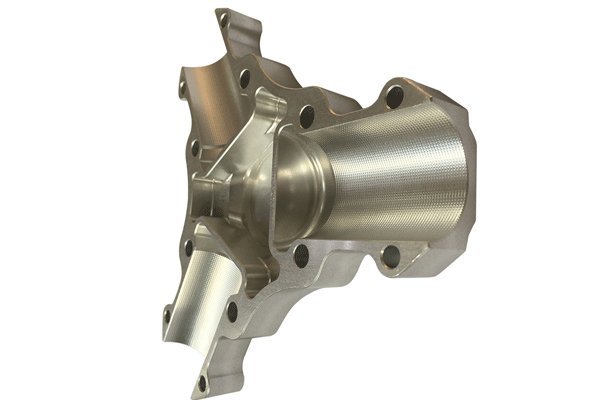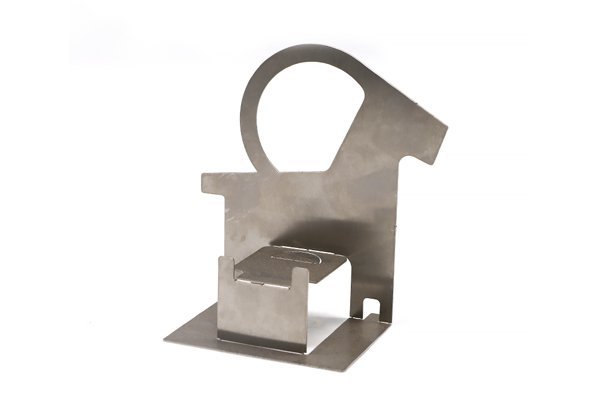Did you know that advancements in CNC (Computer Numerical Control) technology have revolutionized the manufacturing industry, enabling machines to achieve levels of precision and efficiency that were once thought impossible? Today, CNC 5-axis turning is at the forefront of this revolution. In a world where high-performance components are the norm, understanding the nuances of this versatile machining technique is essential for manufacturers across various sectors.
CNC machining, particularly 5-axis turning, has become a game-changer in the production of high-precision components. This innovation allows manufacturers to create complex geometries and intricate designs that were unimaginable with traditional machining methods. In this comprehensive blog, we’ll explore the benefits of CNC 5-axis turning, its applications, the technology behind it, and provide insights into how manufacturers can leverage it for high-performance component production.
What Is CNC 5-Axis Turning?
CNC 5-axis turning refers to a machining process where a workpiece is rotated and manipulated along five different axes simultaneously. Unlike traditional 3-axis turning machinery, which operates only along the X, Y, and Z axes, 5-axis machines add rotational movement around both the X and Y axes. This added flexibility allows the machine to create complex shapes and contours without needing to reposition the workpiece, improving efficiency and accuracy.
Benefits of CNC 5-Axis Turning
One of the most significant advantages of CNC 5-axis turning is its ability to produce parts with exceptional accuracy. The simultaneous movement along multiple axes minimizes the need for multiple setups and reduces the tolerances that can lead to errors. For industries such as aerospace, automotive, and medical devices, where precision is paramount, this capability cannot be overstated.
Unlike traditional machining methods, which can struggle with intricate designs, CNC 5-axis turning can produce parts with complex geometries, including undercuts and intricate features. This capability allows manufacturers to create components that are lighter, stronger, and more efficient.
The efficiency of CNC 5-axis turning translates to significant reductions in production time. Since the machine can complete multiple operations in a single setup, it can produce high-performance components much faster than conventional methods. This speed not only enhances productivity but also enables manufacturers to respond more rapidly to market demands.
Though the initial investment in CNC 5-axis machinery may be higher than traditional machines, the long-term savings can be substantial. Reduced production times, minimized labor costs, and fewer mistakes lead to lower overall costs per part. Additionally, the ability to produce complex components can eliminate the need for secondary operations, further reducing expenses.
The continuous toolpath capabilities of CNC 5-axis turning result in superior surface finishes. This improved finish reduces the need for secondary processes such as polishing and sanding, saving both time and resources.
CNC 5-axis machines offer greater flexibility in terms of tool selection and machining strategies. This adaptability allows manufacturers to take on a wider variety of projects and respond to custom requests more effectively.
In traditional machining, each setup can require significant time and effort. CNC 5-axis turning minimizes the number of setups required by allowing multiple features to be machined simultaneously. This reduction in setups enhances overall workflow efficiency and minimizes downtime.
Applications of CNC 5-Axis Turning
CNC 5-axis turning is utilized across various industries, thanks to its versatility and precision. Here are some specific applications where this technology excels:
Aerospace Industry
The aerospace industry demands high-performance components that meet stringent safety and performance standards. CNC 5-axis turning is used to manufacture complex parts such as turbine blades, aircraft components, and fittings. The precision and detail achieved through this process ensure that every component meets the high standards required for aviation.
Automotive Industry
In the automotive sector, manufacturers use CNC 5-axis turning to create intricate parts for engines, transmissions, and chassis components. The ability to produce lightweight, high-strength parts is critical for modern vehicles, which often rely on advanced materials to enhance fuel efficiency and performance.
Medical Devices
CNC 5-axis turning plays a pivotal role in the production of medical devices and implants. Components such as surgical instruments, dental implants, and orthopedic devices require strict tolerances and high reliability. The precision offered by CNC 5-axis turning ensures that these critical components perform as intended in life-saving situations.
Electronics
In electronics manufacturing, components such as housings for circuit boards and connectors often require intricate designs and high precision. CNC 5-axis turning allows manufacturers to create these components with the exact specifications needed for optimal functionality.
Defense and Military
The defense sector relies heavily on CNC 5-axis turning for producing components that can withstand extreme conditions. Whether it’s weapon systems, communication devices, or protective equipment, precision and durability are critical, making CNC 5-axis turning the go-to method for these applications.

The Technology Behind CNC 5-Axis Turning
Understanding the technology that enables CNC 5-axis turning is key to appreciating its benefits. Let’s take a closer look at the components and systems that make this advanced machining possible.
Machine Components
The spindle is the heart of a CNC turning machine, providing the rotational motion required to machine the workpiece. In 5-axis machines, advanced spindle designs allow for high-speed rotation while maintaining stability and precision.
Tool holders are designed to securely grip cutting tools while allowing for quick changes and adjustments. In 5-axis turning, having the correct tool holder is essential for achieving the desired angles and positions needed for complex machining.
CNC 5-axis machines consist of both linear and rotary axes. The linear axes provide movement along the X, Y, and Z axes, while the rotary axes allow for rotation around the X and Y axes. This combination enables simultaneous manipulation of the workpiece.
Modern CNC machines are equipped with sophisticated control systems that allow for precise programming and operation. Advanced software enables operators to create complex toolpaths, optimize machining strategies, and monitor machine performance in real-time.
Programming and Software
CNC 5-axis turning involves intricate programming that accounts for every movement, cutting speed, and toolpath required to produce high-performance components. The software used in CNC machining often includes CAD (Computer-Aided Design) and CAM (Computer-Aided Manufacturing) systems. Here’s how they work:
Challenges and Solutions
While CNC 5-axis turning offers numerous advantages, it is not without challenges. Understanding these challenges and implementing effective solutions is crucial for manufacturers looking to leverage this technology.
Challenge 1: Complexity of Programming
Solution: Investing in user-friendly CAM software can significantly reduce programming complexity. Many modern CAM systems come with built-in templates and automated features that simplify the programming process for 5-axis machining.
Challenge 2: Higher Initial Costs
Solution: Although CNC 5-axis machines have a higher upfront cost, manufacturers can mitigate this by conducting a thorough cost analysis and evaluating the potential return on investment. Over time, the savings generated from reduced production times and increased efficiency can outweigh the initial costs.
Challenge 3: Skill Gap
Solution: A lack of skilled operators proficient in CNC 5-axis machining can hinder implementation. Companies can address this by investing in training programs and partnerships with educational institutions to develop a skilled workforce.
Challenge 4: Maintenance and Downtime
Solution: Regular maintenance and monitoring of CNC machines can prevent costly downtime. Implementing a preventive maintenance schedule and utilizing predictive maintenance technologies can help manufacturers maintain optimal machine performance.
In today’s competitive manufacturing landscape, understanding and implementing CNC 5-axis turning is crucial for producing high-performance components efficiently and accurately. The benefits, including increased precision, reduced production time, and enhanced flexibility, make it a compelling choice for various industries.
As we discussed, CNC 5-axis turning is not just about machines and tools; it’s about the strategic thinking that goes into optimizing production processes. Embracing this technology can give manufacturers a distinct advantage in the marketplace.
In summary, the journey towards adopting CNC 5-axis turning involves understanding the technology, recognizing its applications, overcoming potential challenges, and ultimately leveraging its benefits. As manufacturers continue to strive for excellence, CNC 5-axis turning is a pivotal technology that deserves consideration.
For businesses looking to stay ahead in the game, investing in CNC 5-axis technology is not merely an option; it’s a necessity in today’s evolving manufacturing environment. The future of high-performance component production is here, and it’s more precise, efficient, and capable than ever before.






